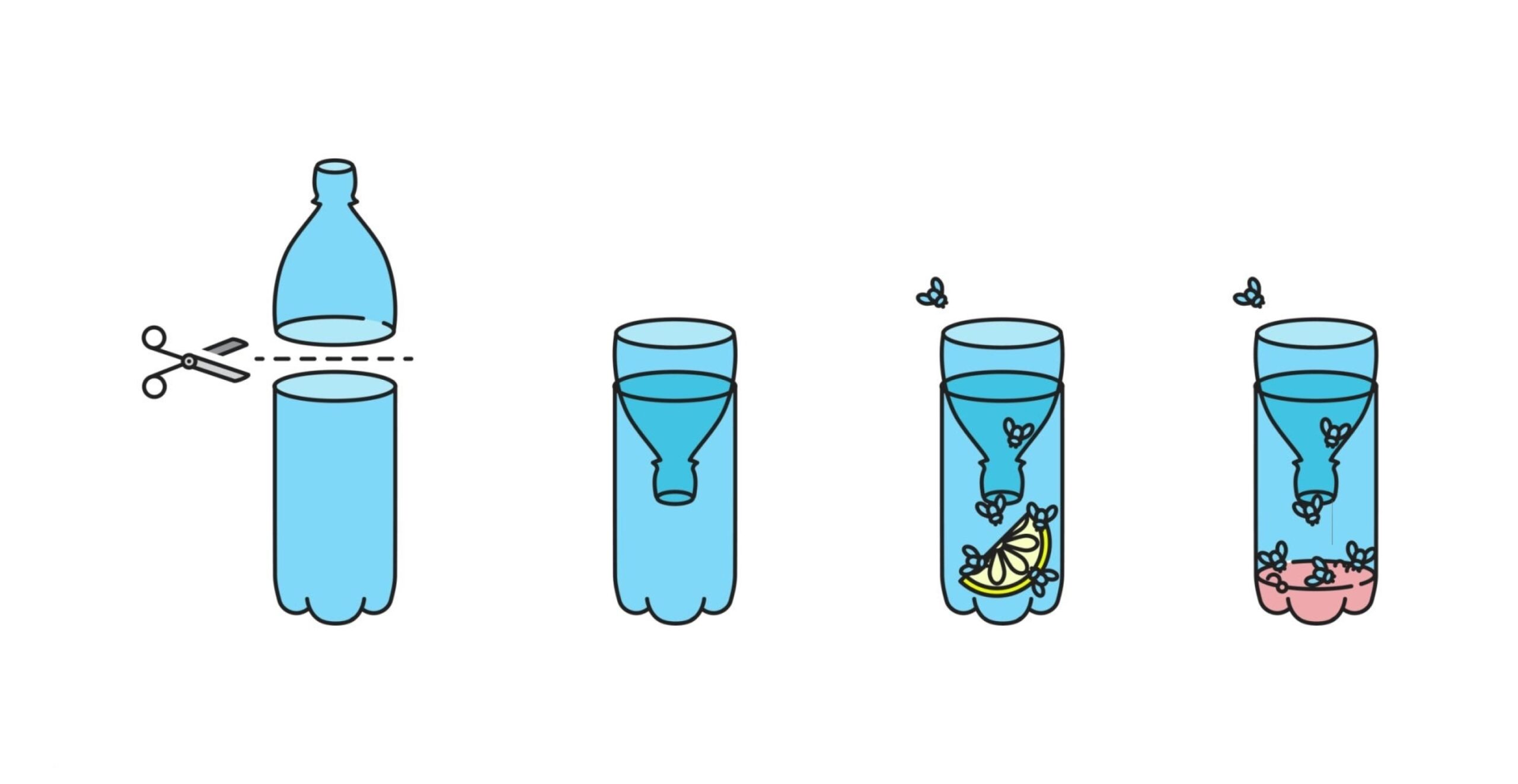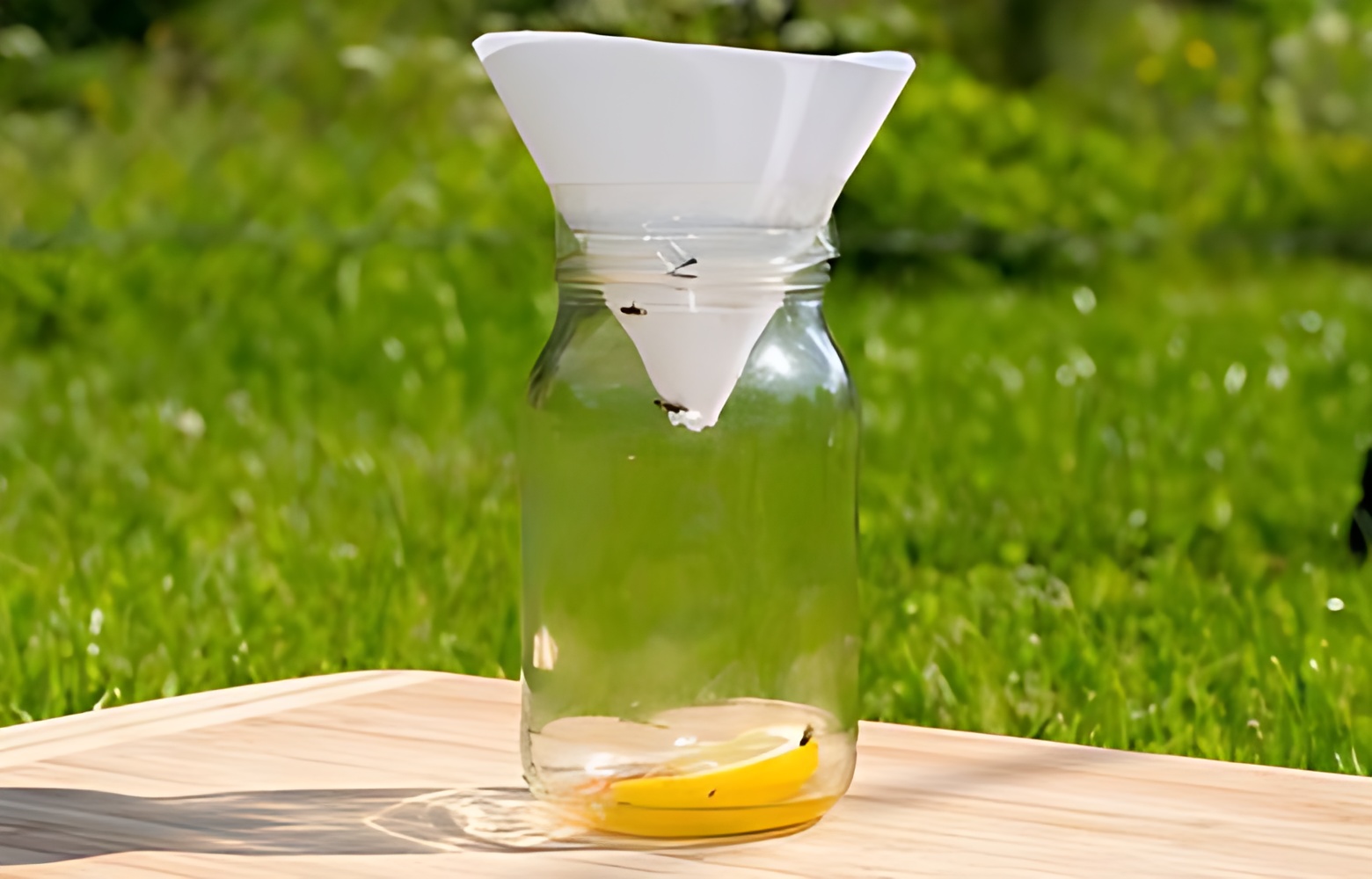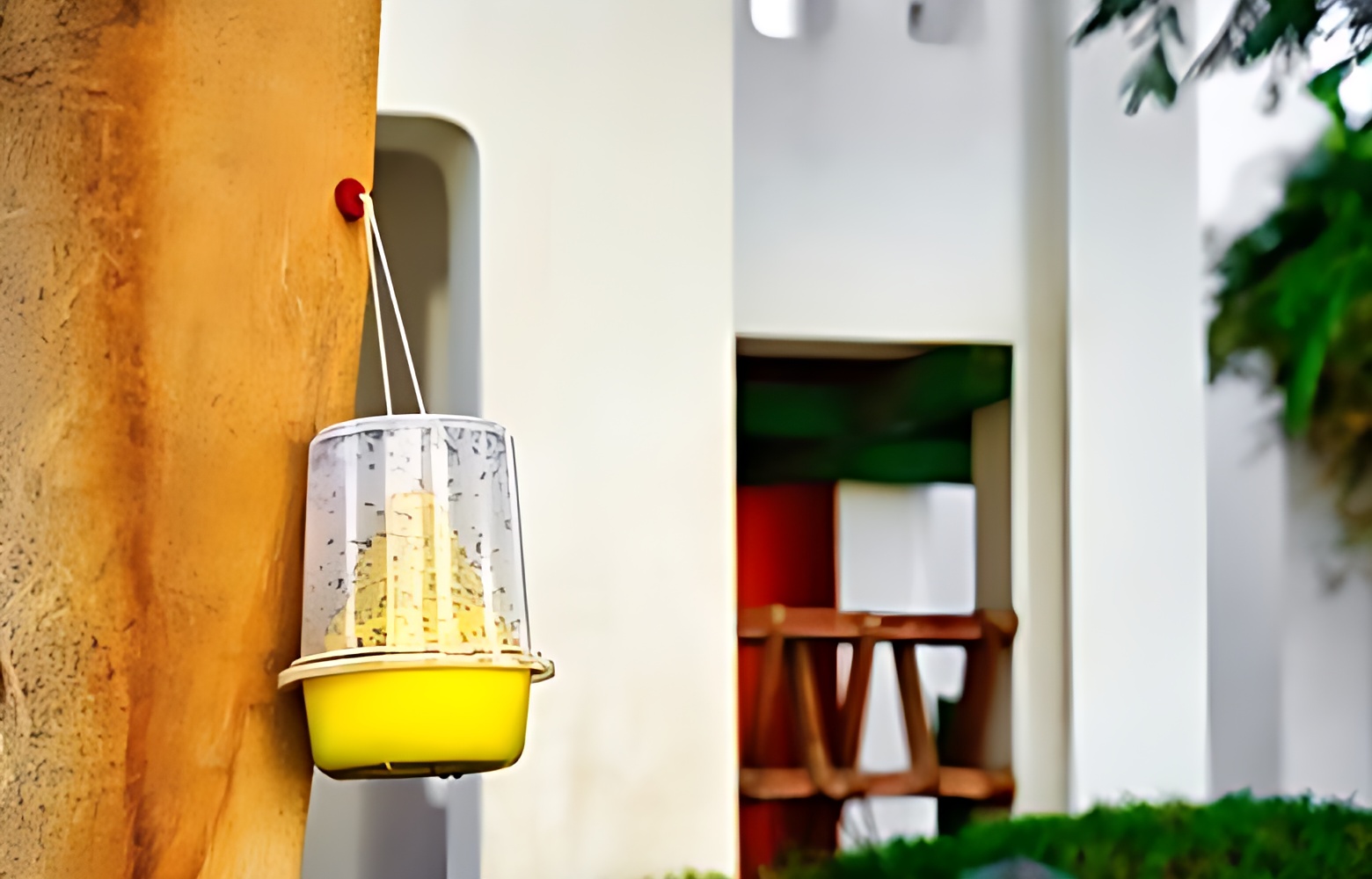Fruit flies, the incessant airborne nuisances, prove challenging! Despite the pinnacle advice advocating an immaculate abode to preemptively thwart their infiltration, circumventing an impending infestation can prove an arduous feat. When these pesky insects inevitably infiltrate your domicile, the conundrum surfaces: How does one eradicate their insistent presence? The panacea appears to manifest in three DIY fruit fly traps, acting as a precursor before resorting to chemical alternatives. As per the erudite insights from the esteemed quarters of the University of Kentucky’s entomology department, the irksome fruit flies assert their prominence predominantly during the twilight of summer and the onset of autumn, prolonging their irksome reign.
However, a pivotal elucidation emerges: the unequivocal eradication of these dainty fiends hinges upon decimating their progenitor source. This necessitates the disposal of overripe produce, the meticulous sanitization of countertops, the assiduous disposal of refuse (coupled with bin sanitation), and the unswerving commitment to pristine drains. Delve into the recesses of cabinets and pantries; a solitary potato or onion harbors the potential to metamorphose into the spawning grounds for myriad fruit flies. Subsequently, embark upon these ingenious homemade remedies in a bid to tackle this exasperating conundrum.
Method #1: Apple Cider Vinegar and Liquid Soap Trap
Craft an effective yet straightforward contraption for trapping fruit flies by combining a modest measure of apple cider vinegar within a diminutive mason jar, alongside a few droplets of liquid soap, such as optional baby shampoo.
- Entails the meticulous amalgamation of soap, ensuring a thorough blend, culminating in the jar’s lid being ensconced beneath a foil layer.
- Employing a pin or paperclip to puncture the foil, fashioning apertures marginally larger than the pin itself, granting passage solely to these diminutive airborne pests.
- Involves securing the foil beneath the lid ring, albeit not entirely screwing it shut. Subsequently, overlay another sheet of tin foil atop the lid ring, tethered in place with a resilient rubber band. Caution must prevail as you perforate this second layer, ensuring a slight interstice between both foil layers.
- Abstain from inadvertently puncturing the innermost foil layer. The strategic misalignment of apertures precludes any inadvertent alignment, preventing the resourceful fruit flies from absconding through unintended passages.

Why This Method Is Effective.
Tiny nuisances, fruit flies, possess an innate attraction to fermentation fragrances. Among their cherished scents lies apple cider vinegar, beckoning them towards their eventual entrapment. The vinegar’s allure ensnares these minuscule creatures, coercing them to traverse the labyrinth of apertures, devised ingeniously within dual layers of foil. This intricate design acts as an enigmatic puzzle, confounding the fruit flies, and thwarting their escape endeavors.
Upon infiltrating this cleverly devised trap, the fruit flies find themselves ensnared, confronted with an inescapable fate. Seclusion within ensures their demise unless the lid is heedlessly removed. Incorporating liquid soap might expedite their demise if desired.
Tip
Should the trap falter in efficacy, consider varying soap types or even eliminating soap altogether. Embrace experimentation fearlessly, tweaking the elements to align with your preference and augment the trap’s efficacy.
Method #2: Plastic Bottle Trap
Create an alternative fruit fly trap using a plastic bottle with a sequence of steps:
- Prompts the piercing or drilling of diminutive apertures into the lid of a soda or water bottle.
- Instructs the resealing of the lid onto the bottle, followed by excising the upper third and reserving it. Introduce an enticing lure like apple cider vinegar, fruit juice, wine, or beer into the bottle’s base.
- Entails inverting the upper section of the bottle and situating it within the bottle, its cap fashioning a funnel directed downward.
- Involves securely fastening the top and bottom parts of the bottle using tape to ensure a unified structure.
- Dictates the placement of this improvised contraption in proximity to the fruit fly congregation site. This makeshift trap offers an alternate methodology to address the persistent presence of these airborne pests.

Why This Method Is Effective.
Enticed by scent, fruit flies succumb to this trap’s allure. The lower allure ensnares them, while the funnel’s design impedes escape.
Not only does this contraption curtail fruit fly presence, but its disposability eliminates the hassle of cleaning. Discard the old trap and embrace a new one hassle-free.
Method #3: The Paper Cone and Jar Trap
Employ a paper cone and a mason jar to craft an exceedingly efficacious fruit fly trap:
- Entails fashioning a paper cone with a minute aperture at its base, fitting snugly into the jar without contacting its bottom. Extending the cone’s height beyond the jar is permissible to ensure a seamless connection between its sides and the jar’s rim. Reinforce the cone’s structure with tape, maintaining its form for subsequent use.
- Involves selecting assorted fruit scraps for the jar’s base—any available remnants like apple or banana peels suffice.
- Position the paper cone within the jar and seal it securely using tape, ensuring an airtight enclosure. Voilà! Your meticulously assembled trap stands poised for deployment, ready to combat the relentless fruit fly intrusion.

Why This Method Is Effective.
Attracted by their namesake, fruit flies find this trap irresistible, particularly with sweet, succulent scraps like pineapple. The trap’s minuscule entrance and the cone’s interior shape confound the flies, impeding their exit. Beware: the cone’s aperture size is critical; a larger hole grants them easy access in and out.
Eradicate Fruit Flies Promptly with Homemade Traps
Master the art of crafting top-notch fruit fly traps at a mere fraction of the cost compared to store-bought alternatives. While store traps remain an option, brace yourself for the potential efficacy of a DIY contraption surpassing expectations.
These traps form just a fraction of an effective fruit fly control regimen, significantly reducing the visible population within your dwelling. However, their effectiveness hinges on coupling them with natural control methods.
Complement your DIY traps with these optimal fruit fly solutions:
- Instantly wash, dice, and refrigerate newly acquired produce to prevent fruit fly transportation. Lingering produce on countertops serves as a delectable haven for fruit flies, intensifying their allure. Unattended produce may hatch fruit fly eggs, perpetuating the cycle.
- Avert leaving open glasses containing juices, wines, beers, or kombucha, and cleanse beverage containers thoroughly to forestall potential fruit fly havens from residual remnants.
- Ensure the absence of food scraps on countertops, sinks, or overnight in compost. Sealed kitchen compost bins and regular emptying are imperative.
- Maintain an empty garbage and recycle, regularly rinsing the cans to deter fruit fly attraction.
- Regularly clean sink drains and garbage disposals to mitigate accumulating food residue—a prime breeding ground for fruit flies.
- If your fruit fly mitigation endeavors yield negligible results, an undetected source may persist or the observed flies might not be fruit flies. Beware of the resemblance between drain flies, fungus gnats, and fruit flies, allowing for a holistic approach to tackle persisting fly dilemmas.
FAQ.
Q. What Is The Fastest Method For Getting Rid For Fruit Flies?
Effective fruit fly control necessitates multifaceted efforts. Prioritize sanitation by pinpointing and eradicating potential fly sources. Once addressed, fruit fly presence diminishes, yet a trap expedites the residual fly removal process.
Q. Which Bait Attracts The Most Fruit Flies?
Fruit flies display broad preferences, favoring overripe fruit, decomposing food, and fermenting odors. Notably, apple cider vinegar and succulent pineapple rinds lure them most irresistibly.
Q. Can You Use Baking Soda To Get Rid Of Fruit Flies?
Maintaining pristine drains is pivotal in combating fruit flies and drain flies. Although baking soda lacks efficacy against fruit flies, concoct a blend of 1/2 cup baking soda, 1/2 cup salt, and 1 cup vinegar for drain hygiene. Pour the solution overnight, followed by boiling water the next morning to exterminate drain fly larvae. For long-term prevention, periodic rigorous scrubbing and deep cleaning of kitchen and bathroom drains are imperative to thwart recurring infestations of these pesky flies.
Q. Will Fruit Fly Traps Work On Other Pests?
Tailored for fruit flies, traps also suit other diminutive airborne pests like fungus gnats and drain flies. Pest management involves adopting a pest’s perspective. Diverse pest species warrant distinct control methodologies, requiring astute and variable approaches for effective mitigation.

